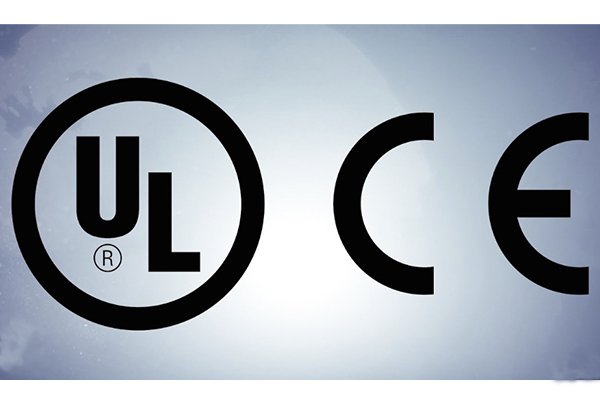CE vs UL Power Strips: What’s the Difference and Why It Matters

If you’ve ever tried to export or import power strips, you’ve probably seen two little marks everywhere—CE and UL. But what do they really mean? And how do they affect your ability to sell legally and safely?
CE and UL certification1s are essential safety approvals for power strips, but they apply to different markets. CE is required in Europe, while UL is necessary for the U.S. Each comes with unique testing standards and compliance responsibilities.
Let’s walk through the differences—and why choosing the right certification matters more than you think.
What Does CE Certification Mean for Power Strips in the European Market?
For any product sold in Europe—including power strips—CE marking is mandatory. But don’t mistake it for just a label. It’s a sign that the product complies with EU safety, health, and environmental protection legislation.
CE certification2 for power strips ensures compliance with the Low Voltage Directive3 (LVD), Electromagnetic Compatibility4 (EMC), and RoHS regulations5. It’s the legal passport for entering EU markets.

Core CE Directives for Power Strips:
- LVD (2014/35/EU): Electrical safety for devices operating between 50–1000V AC
- EMC (2014/30/EU): Prevents interference with other electronic devices
- RoHS (2011/65/EU): Limits hazardous substances like lead or mercury
| Directive | What It Covers |
|---|---|
| Low Voltage Directive | Socket design, insulation, overcurrent |
| EMC Directive | Interference and noise suppression |
| RoHS Directive | Material composition and safety |
For DIY stores or wholesalers targeting Germany, France, or Spain, CE is non-negotiable. And remember: the CE mark is self-declared, but you’ll need test reports from certified labs to back it up.
What Is UL Certification and Why It’s Crucial for Selling in the U.S.
In the U.S., UL (Underwriters Laboratories) is the gold standard for product safety—especially when it comes to electrical goods like power strips.
UL certification1 means the product has been tested by an independent lab to meet stringent safety standards—especially fire resistance, insulation strength, and overload protection. It’s widely recognized by retailers, inspectors, and insurance companies.

UL Testing Focus Areas:
- Overload protection
- Heat resistance and fire safety
- Grounding reliability
- Socket tension and plug safety
| UL Mark | What It Means |
|---|---|
| UL Listed | Product passed full lab testing |
| UL Recognized | Components inside are approved |
| ETL (similar) | Tested to UL standards by another lab |
Unlike CE, UL is not self-declared—you need to apply and be audited regularly. It’s more expensive and time-consuming, but essential if you’re targeting Home Depot, Amazon U.S., or U.S. retail chains.
Key Differences Between CE and UL Standards for Power Strip Safety
At a glance, CE and UL may seem similar—both are about safety. But their structure, enforcement, and testing methods are quite different.
CE is more of a legal requirement across the EU, while UL is a deeply trusted safety standard for U.S. consumers. CE compliance can be declared by the manufacturer, but UL requires third-party testing.

| Feature | CE (Europe) | UL (United States) |
|---|---|---|
| Required for market entry | Yes | No (but often expected) |
| Who certifies? | Manufacturer (self-declared) | Independent lab (UL/ETL) |
| Testing cost | Moderate (depending on test lab) | Higher (full certification process) |
| Renewal/Audit | Not required | Regular audits and inspections |
| Label appearance | CE mark | UL Listed or ETL Mark |
| Focus areas | Voltage, EMC, RoHS | Fire, overload, grounding, heat |
So when someone asks, “Is UL better than CE?”—the real answer is: they’re just made for different rules and buyers.
Which Certification Should You Choose Based on Your Target Market?
This is the most important question to ask before ordering production. Where are your power strips going?
If your target market is Europe (Germany, France, Italy, etc.), you must go for CE. If you’re selling in the United States or Canada, UL is the safer and more acceptable route.

Consider These Buyer Preferences:
- European DIY chains will ask for CE, EMC, RoHS reports
- U.S. online retailers (like Amazon or Walmart) will require UL/ETL listing
- Australian markets need RCM or SAA certifications
- Middle East or Africa may accept CE but prefer third-party verification
| Market | Mandatory Certification |
|---|---|
| Europe | CE (with LVD, EMC, RoHS) |
| United States | UL or ETL |
| UK | UKCA (post-Brexit CE equivalent) |
| Canada | CSA or UL |
And if you’re building a global brand? You might need both—just make sure your factory is up to the task.
Conclusion
Whether you’re a retailer, importer, or launching your own power strip line, understanding CE vs UL isn’t just about compliance—it’s about trust. Knowing which certification fits your market protects your brand and your customers. And if you need a factory that knows both systems inside and out? You know where to find me.
-
Explore UL certification to learn about safety standards that protect consumers in the U.S. market. ↩ ↩
-
Understanding CE certification is crucial for compliance in the European market, ensuring safety and legal entry. ↩
-
The Low Voltage Directive is essential for electrical safety; knowing its details can help ensure compliance. ↩
-
Learn about EMC to understand how it prevents interference with other devices, ensuring product reliability. ↩
-
RoHS regulations limit hazardous substances; understanding them is vital for safe product design. ↩






